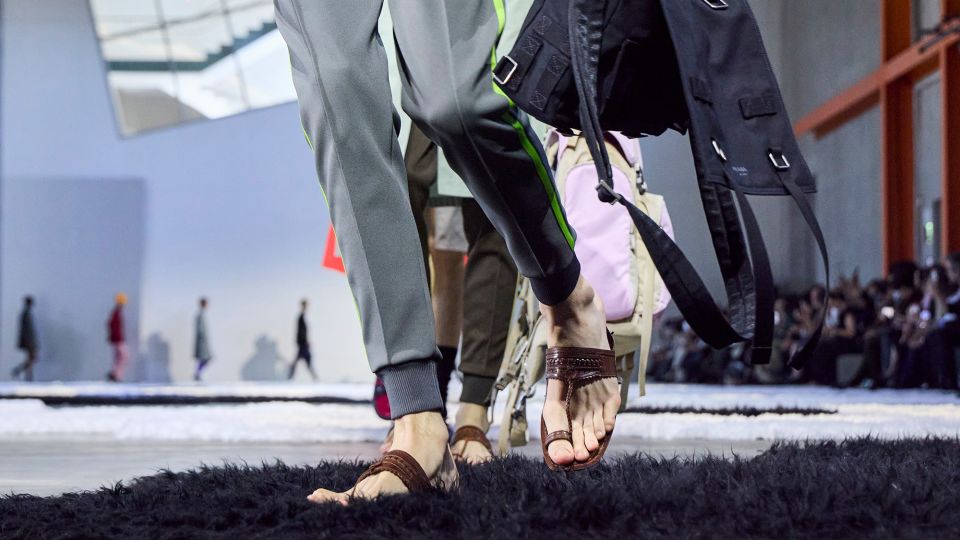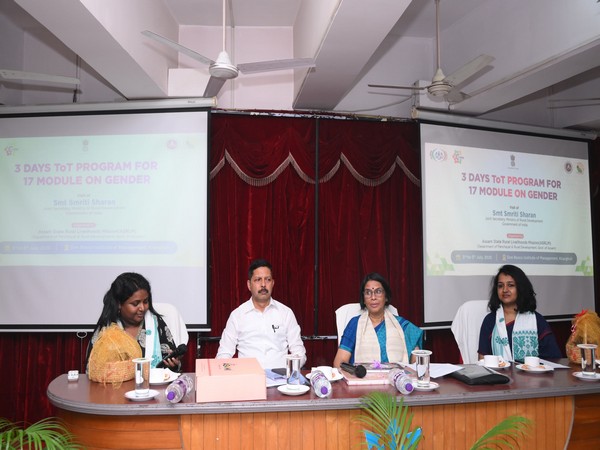
The Rise of Indian Craft in Global Fashion
When Prada sent several pairs of brown sandals with distinctive toe rings and intricate stitching down its menswear runway in Milan last month, observers were quick to point out their resemblance to a centuries-old piece of Indian heritage. The storied Italian fashion house may have presented the shoes as a new luxury creation, but many in India simply saw a pair of Kolhapuri chappals — traditional hand-crafted sandals with roots stretching back to the 12th or 13th century.
Prada’s initial failure to acknowledge the inspiration behind the shoes sparked fierce and ongoing debate over cultural appropriation. Critics accused the label of erasing the legacy of Indian artisans, with voices across social media calling out what they saw as blatant design theft. Within a week, Prada had acknowledged in a letter to an Indian trade group that the sandals in its men’s Spring-Summer 2026 collection were indeed “inspired by traditional Indian footwear.” In a statement to Daily News, the brand said it has “always celebrated craftsmanship, heritage and design.” Prada later added that it had met artisanal footwear manufacturers in India “to discuss potential opportunities for future collaboration.”
Prada’s readiness to confront the controversy could be a reflection of the fashion industry’s growing interest in India’s luxury consumers — and a reluctance to anger them. But the episode also epitomizes how Western labels have often struggled to meaningfully engage with the country’s crafts and culture.
A Booming Luxury Market
India’s luxury market is on a dramatic ascent, estimated to expand from $7.73 billion in 2023 to $11.3 billion by 2028 — a rate that would likely outpace most of the world’s major luxury markets, according to global consulting firm Kearney. This projected growth is fueled by a rising middle class, increased urbanization and a new generation of brand-conscious, internationally minded young consumers.
But today’s Indian luxury consumer is “no longer a singular archetype,” according to the celebrated Indian fashion designer Gaurav Gupta. “We’re seeing a beautifully diverse audience, from second-gen industrialist families to first-gen digital entrepreneurs, artists and global citizens — who are all looking for something deeper than just a logo,” he said in an email.
Major brands have been investing heavily in response. Louis Vuitton, Balenciaga and Valentino are among the fashion houses that have opened flagship stores in Mumbai or Delhi in the last three years. Others have collaborated with Indian labels or creatives on designs intended to speak more authentically to local audiences.
Some of these brands are “adapting beautifully,” Gupta said, but the “real disconnect happens when brands view India as a commercial opportunity rather than a cultural dialogue,” he added. “The Indian buyer wants to feel seen. It’s no longer enough to just open a flagship in Mumbai, you need to speak the emotional and visual language of the market.”
Age-Old Debate
Indian inspiration is as essential to Western fashion as pajamas and Madras plaid. But accusations of cultural appropriation have intensified in recent years due to the growth of internet access in the country, the rise of social media platforms and a surging sense of cultural pride.
“A lot of Indian people, including designers and artisans, are aware of their rights,” said Toolika Gupta (no relation), director at the Indian Institute of Crafts and Design (IICD) in Jaipur, in an email, adding: “They want acknowledgment of their legacy.”
In 2019, fashion house Gucci sparked controversy with its “Indy Full Turban,” sold for $790 on Nordstrom’s website. The blue headpiece closely resembled the traditional Sikh turban, prompting backlash from Sikh communities in India and elsewhere. It was eventually removed from the website, with Nordstrom quickly apologizing amid the backlash.
Just this year, the clothing company Reformation was criticized for selling a blouse, skirt and scarf that reminded many South Asians of the lehenga, an Indian garment consisting of a long skirt, top and a dupatta (scarf), a staple of Indian fashion for centuries and typically draped across a woman’s chest. Some took issue with Reformation’s lack of acknowledgment for the garment.
In a statement to The Washington Post, Reformation said the design in question was inspired by a 1990s-era John Galliano gown and scarf set owned by the model Devon Lee Carlson, with whom it collaborated on the collection.
H&M, meanwhile, recently came under fire for a sleeveless sheer “long camisole” top and trouser set that many social media users likened to the salwar kameez, a traditional Indian tunic and pant.
In a statement to Daily News, H&M said the design took “inspiration from current fashion trends like dresses layered over pants and the popularity of sheer pieces, as well as various plays on transparency and movement.”
It’s not just labels that have sparked controversy. Frustration spilled onto TikTok last year after the fashion rental company Bipty posted a now-deleted video featuring White women wearing sheer shawls draped across their chests, describing the look as “very European effortlessly chic.” South Asian users on the platform immediately noted the similarities between the shawl and a dupatta. Many posted their own videos draping dupattas and mockingly dubbing them “Scandinavian scarves,” using humor and irony to highlight the apparent erasure and misrepresentation of Indian heritage.
Bipty did not respond to Daily News’s request for comment.
More Than a Manufacturing Hub
High fashion’s relationship with Indian artisans stretches back to at least the 17th century, when Europe’s royal tailors sought out textiles like cotton and silk from the subcontinent. Over centuries, this cross-continental exchange has transformed Indian motifs from prized curiosities into ubiquitous elements of Western style.
According to IICD’s Gupta, textiles such as chintz and paisley are deeply rooted in India’s rich artistic traditions and have long inspired global fashion, though their origins are now frequently overlooked.
But India is not just a source of inspiration for luxury fashion — it’s also an integral part of its supply chains. Today, a significant segment of the industry’s manufacturing is outsourced to ateliers, embroiderers and textile producers in India.
Yet, despite Indian artisans’ foundational role, their creations are often shipped to Europe for final assembly and can thus be labeled as being “made” in Europe. This kind of erasure, according to Imran Amed, founder, CEO and editor-in-chief of the industry publication The Business of Fashion, has “reduced India to a manufacturing hub while Europe gets the cultural and economic credit.”
“In India, where craft is livelihood for millions, this distinction matters even more. It’s not just about symbolism — it’s about economic justice and dignity,” he said via email.
The backlash Prada faced “wasn’t just about a sandal,” Amed added. “It was a broader reaction to a long history of erasure and under-acknowledgment.”
‘Something Truly Indian’
Homegrown designers are helping to change things. Indian fashion is having a striking impact on red carpets worldwide — and not only on the backs of Bollywood stars. Western celebrities are increasingly embracing Indian designers, too.
Cardi B wore a custom-made, electric blue, hooded sculptural gown by Gaurav Gupta to the 2023 Grammys, while Zendaya walked the carpet in a shimmering, hand-embroidered blue sari gown by Rahul Mishra at a high-profile event in Mumbai months earlier. Kim Kardashian, meanwhile, has worn designs by the likes of Manish Malhotra and Sabyasachi Mukherjee, who last year became the first Indian fashion designer to attend the exclusive Met Gala in New York.
“It’s a powerful shift, almost like we’re reclaiming our own narrative,” Gaurav Gupta told Daily News. “Designers from India are now presenting on the global stage not as ‘ethnic’ alternatives, but as innovators with our own language, our own shapes, our own ideologies. We’re not adapting to fit in anymore; we’re expressing to stand out.”
For many Indians, the Kolhapuri chappals that Prada said it was “inspired” by represent the ingenuity and artistry of Kolhapur, a historic city nestled in the country’s western Maharashtra state.
Typically crafted from locally sourced buffalo hide and tanned using traditional vegetable dyes, the sandals could effectively withstand the relentless heat and rugged terrain of the Deccan Plateau. The distinctive toe loop, which is attached to the T-strap, helped keep them close to the wearers’ feet.
Cutting across generational and social divides, the Kolhapuri chappal embodies both the enduring spirit of rural India and a bridge to contemporary fashion. The shoe is protected by a coveted “geographical indication” tag — like the one ensuring Champagne is only produced in France’s Champagne region — that, in theory, safeguards this symbol of Indian heritage from copycats.
“It’s something truly Indian,” said Shubhika Sharma, the prominent Indian fashion designer and founder of the label Papa Don’t Preach, in a video interview. Prada’s initial failure to acknowledge the Indian artisans behind the design amounted to a “missed opportunity for Indian craftsmanship,” Sharma added.
About 10,000 artisan families in Kolhapur are engaged in the chappal trade, according to local media reports, though many of them struggle in poor conditions and earn low wages.
In India, Kolhapuri chappals can retail for as little as $5 or as much as $100, depending on the quality of leather and level of craftsmanship. While Prada’s sandals had not hit the market at the time of last month’s controversy, the luxury fashion house’s shoes typically retail at prices ranging from $700 to well over $2,000.
For Sharma, “everything just boils down to respect,” she said. “Was due respect given to the creator, to the person who originated it, to the culture that originated it?”
Some Western labels have proven better at engaging with Indian audiences than others. In 2023, Dior made headlines by hosting a landmark runway show at Mumbai’s historic Gateway of India, unveiling a Pre-Fall collection that celebrated the subcontinent’s artistry. The collection featured Banarasi brocade, mirror work, tie-dye detailing, Nehru collars and kurta tailoring — motifs deeply rooted in Indian tradition and craftsmanship.
Many of the embroideries and textiles on the runway were made by the Mumbai atelier Chanakya International, which was credited for its role. The show was widely hailed as a respectful homage, with Vogue India’s fashion director Anaita Shroff Adajania describing it as “a thank you to India.”
Amed, from The Business of Fashion, meanwhile, called the collaboration between Chanakya International and Maria Grazia Chiuri, then Dior’s creative director, as “thoughtful… not performative,” adding: “Chiuri hasn’t just sourced embroidery from India; she’s spotlighted the artisans, acknowledged the lineage of the craft, and in doing so, helped shift perceptions of where luxury value is created.”
Similarly, last month, Nike launched its first collaboration with an Indian fashion label, the Delhi-based brand NorBlack NorWhite, unveiling a vibrant range of sportswear inspired by ancient tie-dye techniques. The move was broadly celebrated by social media users in India, a country in which Nike has long struggled to make commercial inroads.
For Diet Sabya’s founder, however, much more must be done to ensure genuine recognition for Indian talent and traditions.
“When India is being eyed as the next big luxury market, you can’t keep treating it like an exotic pitstop,” they said. “While a few brands are finally acknowledging us as the global textile powerhouse we are — it’s still crumbs. Visibility is a start. But equity is the end goal.”




















